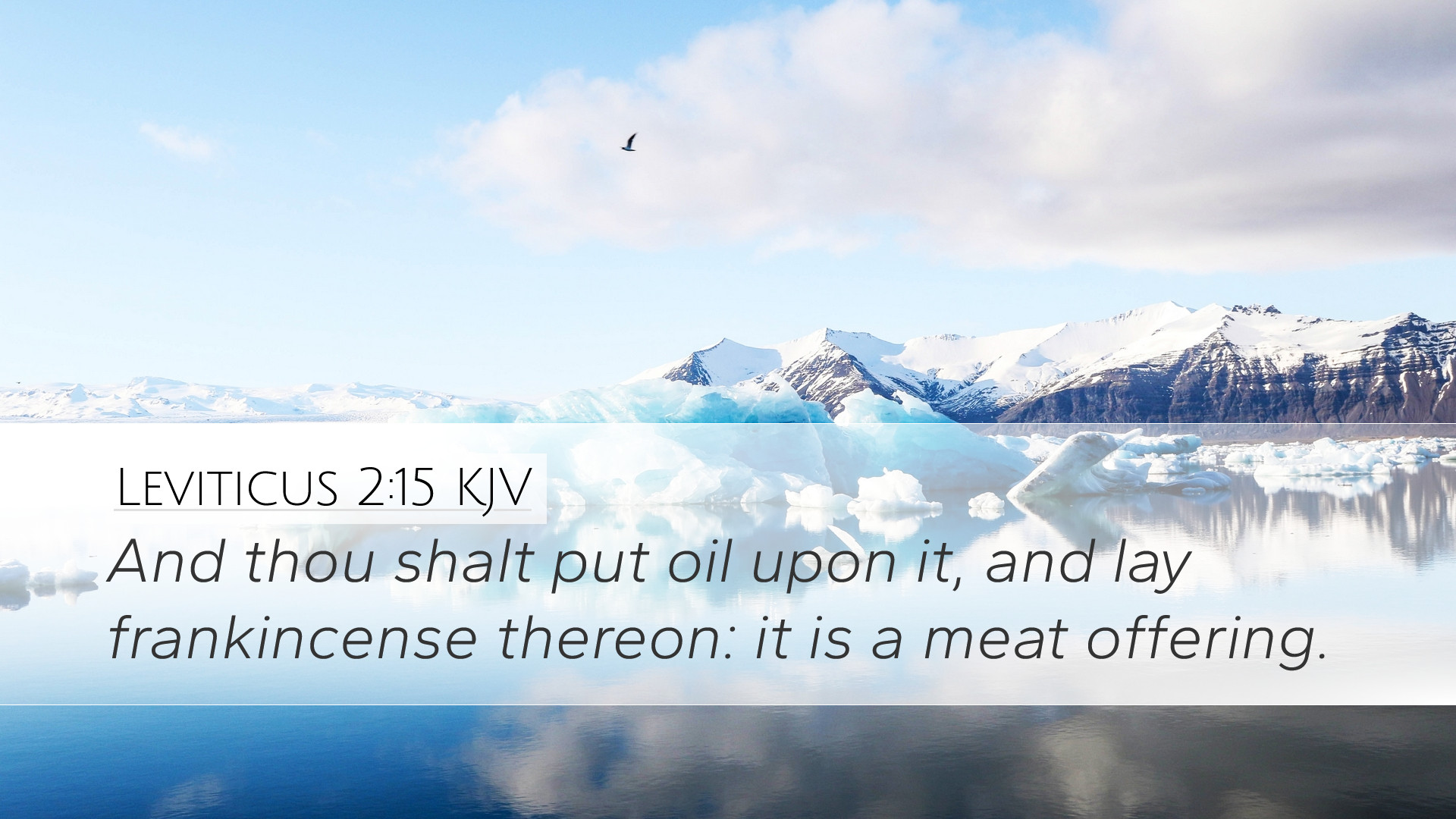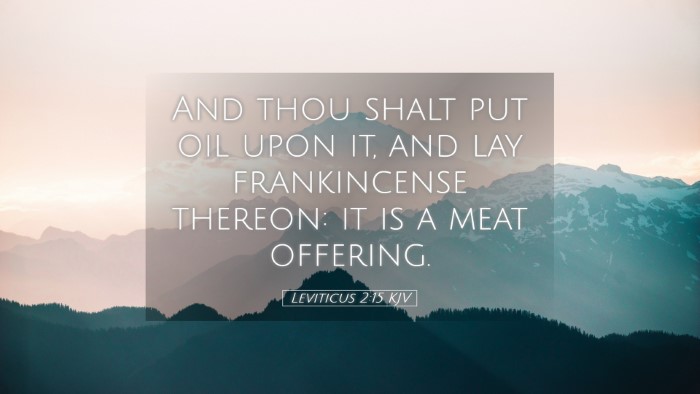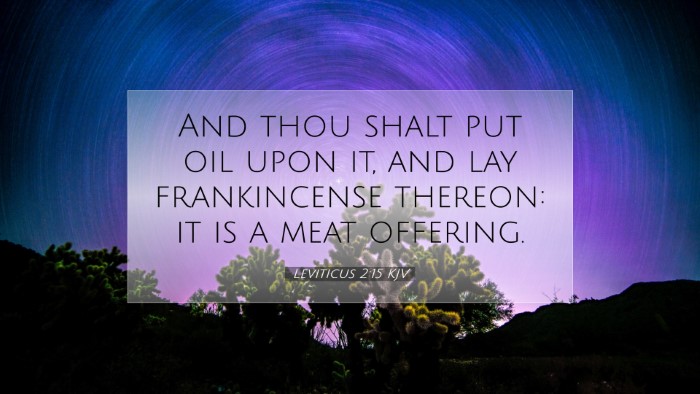Commentary on Leviticus 2:15
Verse: "And thou shalt put oil upon it, and lay frankincense thereon: it is a meat offering." (Leviticus 2:15, KJV)
Overview
The sacrificial system of Israel detailed in Leviticus is an essential foundation for understanding biblical worship and the character of God’s covenant with His people. Leviticus 2 specifically addresses the regulations concerning the Meat Offering (also known as the Grain Offering), highlighting its components and the significance of each element.
Oil in the Grain Offering
Matthew Henry emphasizes that oil represents the grace of God, which is essential in all acts of worship. Just as oil was a necessary component of the grain offering, the grace of God must permeate our lives, informing our devotion and service.
Albert Barnes notes that the inclusion of oil signifies that the offering is to be enriched and made favorable to God. The oil is often seen as symbolizing the Holy Spirit, which anoints both the worshiper and the offering itself, demonstrating the spiritual significance attached to this act of worship.
Frankincense and its Significance
Adam Clarke points out that frankincense, a valuable and aromatic substance, symbolizes the pure and sweet nature of the worship that is acceptable to God. The fragrant aroma ascending from the offering represents the prayers and praises of the people, signifying the importance of an offering that comes from a heart aligned with God's will.
Matthew Henry further explains that the act of offering frankincense was not merely for ritualistic purposes; it reflects a deeper truth about the kind of worship that God desires—a life consecrated to Him, marked by purity and sincerity.
The Nature of Meat Offerings
Albert Barnes elucidates that the grain offering was characterized by its lack of blood, distinguishing it from other sacrifices that involved animals. This offering is often viewed as an expression of gratitude, acknowledging God's provision and blessings. The absence of blood signifies that while the offering is significant, it also speaks to a different aspect of worship—an intellectual and spiritual acknowledgment of dependence on God.
Adam Clarke remarks that the grain offering was often associated with the harvest, making it a symbol of dedication and a recognition of God's sovereignty over the land and its produce. This teaches that all sustenance and success originate from God, invoking a heart of thankfulness in the worshiper.
Application for Today
The modern believer can glean much from understanding the implications of Leviticus 2:15. In the New Covenant, the principles established through these Old Testament sacrifices transcend into our lives as living sacrifices as articulated in Romans 12:1.
- Consecration: Just as the offering was to be made pure and with certain elements, we are called to present our lives in fullness to God, allowing the Holy Spirit (symbolized by oil) to guide and refine us.
- Gratitude: The grain offering exemplifies the need to acknowledge God’s provisions in our lives. Each meal, each blessing, becomes an opportunity to express our gratitude to God.
- Worship as a Lifestyle: The sacrificial system underscores that our worship must extend beyond mere ritual. It should involve every facet of our lives, seeking to please God in our actions, thoughts, and interactions, akin to the fragrant offering of frankincense.
Conclusion
In summary, Leviticus 2:15 serves not only as a directive for the ancient Israelite community but also as a profound teaching tool for present-day believers. It highlights the importance of sincerity in worship, reflects on the need for divine grace, and emphasizes a lifestyle of gratitude towards God. The detailed insights from Matthew Henry, Albert Barnes, and Adam Clarke invite pastors, students, and theologians to explore deeper meanings within this passage, encouraging a richer engagement with Scripture that can transform daily living and worship.


